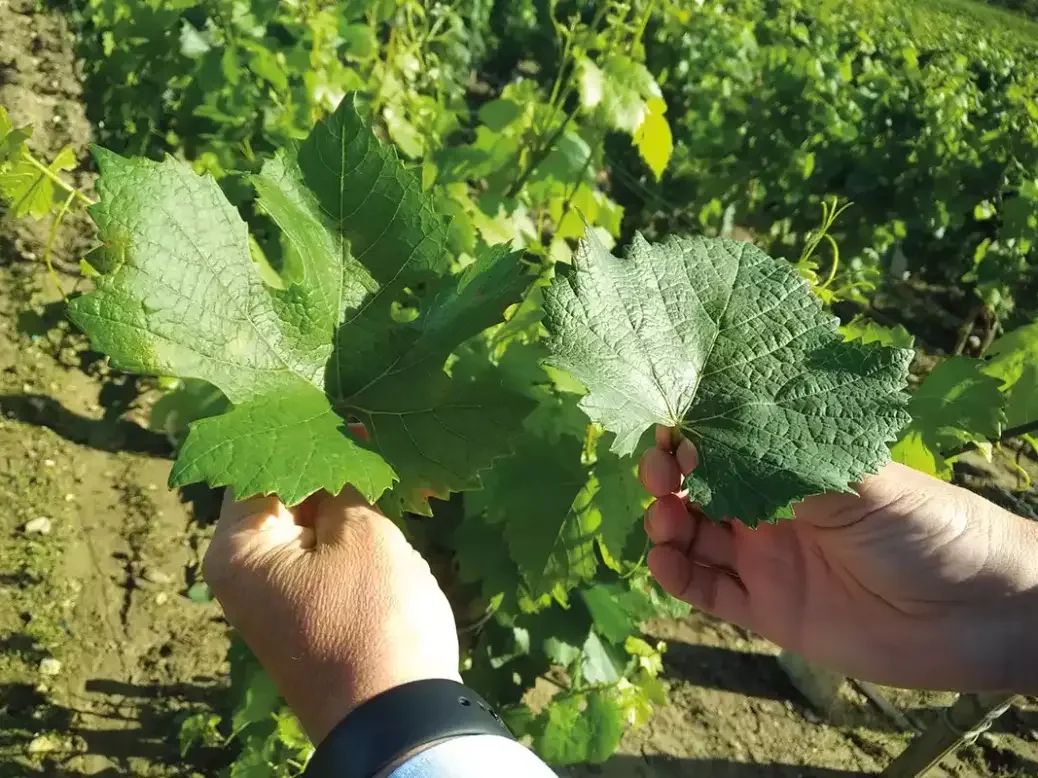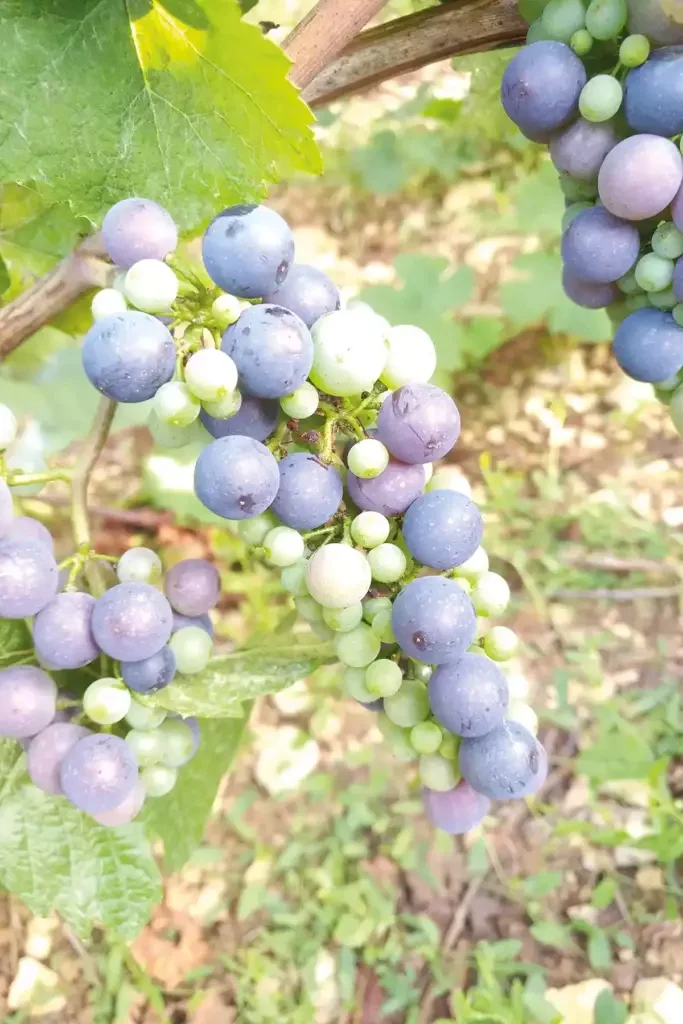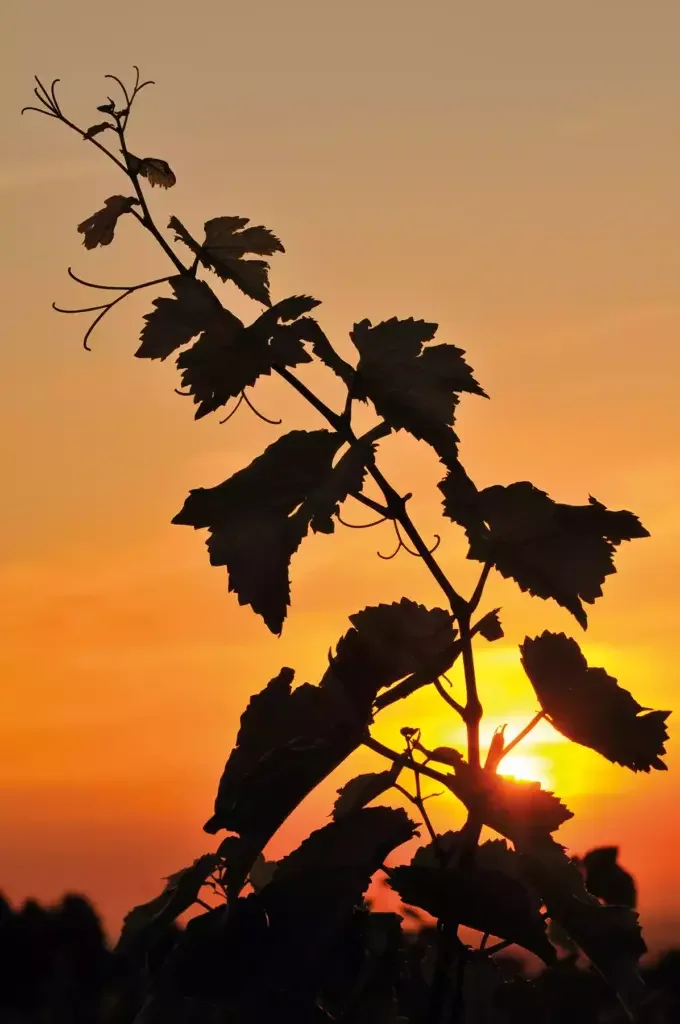
As part of our week-long focus on viticulture, we return to a vintage piece by Anne Krebiehl MW, first published in WFW67 (March 2020), which explores some of the exciting developments in research into Pinot Noir clones in Burgundy and Champagne.
Viticulture special: Marco Simonit—A lesson in substance and style
Viticulture special: Against the dying of the vine—A wake-up call from the nursery
Viticulture special: Wine in History—Ampelos, the satyr of the grapevine
Looks can be deceiving—especially when it comes to Pinot Noir genetics. Straggly bunches often bring forth superior fruit; the scrawniest, most millerandé are prized for their complexity of flavor, favorable pulp:skin ratio, and tannin structure. Their variable and ultra-low yield, however, is not something every grower relishes. Only a handful of growers will plant such a selection, known as Burgundian très fin, and then only in vineyards where these attributes make sense. Many, especially outside Burgundy, prefer the relative predictability and stability of a mono-clonal planting, as the worldwide success of certain clones shows. A previous report (“Cracking the Clonal Code,” WFW 55, pp.112–19) traced their genesis. Developed after the pan-European catastrophe that was phylloxera, clonal selection initially focused on yield stability. Later, parameters like color, ripening, and disease resistance gained importance, and finally organoleptic properties and wine structure were also taken into account, as was sanitation and the propagation of virus-free material. Now, however, climate change has put a whole new spin on the selection game; early ripening is no longer the positive trait it once was, while previously frowned-upon high-acid genes now hold fresh possibility. Yet even before this became as crucially apparent as it is now, clonal selection had evolved.
The popularity of mono-clonal plantings and more acute ecological awareness have shifted clonal selection to new and evolving objectives. Today, selection is all about the preservation of a biodiverse and disease-free genetic pool that evolved in a particular region, with its 0wn climate and soil, representing authentic, locally true genetics. This is where the game is at—at least in Burgundy and, more recently, also in Champagne. This line of enquiry usually leads straight to the practice of massal selection, but what happens most often today blends the practices of clonal and massal selection, going a long way toward eliminating their respective weaknesses: the loss of diversity and resilience in mono-
clonal plantings, and the sanitary and evolutionary lottery of massal selection. What matters most is local adaptation and authenticity, diverse but high-quality traits—and the ability to choose certain selections for certain purposes.
Devoted to diversity
In Burgundy, two groups are working on such selections: one public, one private. The public body is the Association Technique Viticole de Bourgogne (ATVB), an agency of the Chambre d’Agriculture de Côte d’Or. Its main remit since its foundation in the 1980s is the preservation of the genetic diversity of Pinot Noir, Chardonnay, and Aligoté across Burgundy. The private selections are made by the Association de la Sauvegarde de la Diversité des Cépages de Bourgogne, founded in 2008, which has become known locally as La Fondation. Christophe Deola, director at Domaine Louis Latour in Aloxe-Corton, who is familiar with both bodies, says, “The ATVB and the Fondation do the same thing, but ATVB does it on a far larger scale. The ATVB over the past 20 years has scouted more than 200 parcels of old vines to find different Chardonnays and Pinots. The Fondation, on the other hand, has just about 50 members, domaines who own mostly grands crus and great premiers crus [in the Côte d’Or].” The Fondation refused a request for an interview, preferring to keep its work private—understandable when such rarefied material is being propagated. Theft of budwood from famous vineyards is already rife, and the Fondation’s carefully made selections, just like the ATVB’s, are the result of years of observation, refinement, propagation, cultivation, and care—paired with priceless experience. It is a collective but private effort for the benefit of its members and their very specialized, local needs. The ATVB, however, is happy to explain. Its selections—graded into supérieur (charmingly shortened into sup), fin, fin plus, and très fin—are available via nurseries. ATVB’s website states that its “third way” selection, which “combines the advantages” of clonal and massal selection “is motivated by the fear that the ‘official’ [that is, purely clonal] selection will standardize the grape varieties and lead to a reduction in biodiversity.”

Laurent Anginot, adviser at the ATVB, is in charge of these selections. He scouts old vineyards, looks after the nursery vineyards, and oversees its microvinifications. Vines are observed for a number of years before being selected, propagated, and planted out in order to be observed further. Records are kept on all the selected individuals—clones, in effect. This way a profile is built for each individual. Depending on its traits, it may fit into one of the selections—sup, fin, fin plus, or très fin. These selections are thus composed of various proportions of individual, known, traceable clones, eliminating the unpredictability of massal selection and preserving diversity. The process, as always, is tectonically slow but dynamic in so far as selections are constantly adapted, representing a true but diverse genetic heritage of the region, as the individuals and proportions of each clone within the selection change. Hence, a vineyard planted with ATVB’s fin selection today will have a different composition from one planted with fin ten years ago.
Each year, microvinifications of the ATVB selections are compared against a control sample, which comprises 50 percent each of clone 777 and clone 115. “These are the two most widely planted clones,” Anginot says, which is why they are used as a comparison sample for the other selections. These microvinifications are then tasted blind and scored systematically according to ten criteria—color intensity, olfactory intensity, olfactory faults, olfactory quality, acidity, tannin quality, roundness/body, persistence, gustatory defaults, and gustative quality—and are analyzed for statistical variation. There is also statistical analysis according to olfactory and gustative descriptors—for example, red fruits, stone fruit, spice, floral, vegetal, reduction, oxidation, volatility, and others. Thus, the selections are assessed systematically each year, permitting a good overview of the performance of the different selections across vintages.
The ATVB has 15ha (37 acres) of nursery vineyards. In Beaune, it has a conservatory greenhouse hosting 1,200 potentially different Pinot Noir, Chardonnay, Pinot Gris, and Aligoté vines that have been collected across Burgundy. “This is the coffret fort, the safe,” says Anginot about his precious collection. The vines are kept in the greenhouse to protect them from weather and disease. The mostly ungrafted vines are all in small pots in neat rows. Since they are not expected to bear fruit, they do not have to develop roots. Whenever selections are planted out for testing, they are planted as far away as possible from other vineyards and in land where no vines have been planted before—as a precautionary measure ensuring the selected plants, this time on rootstocks, can be observed in their true nature and habit. On a serene and sunny evening in late August 2019, in the fabulously named Bouze-lès-Beaune in the Hautes-Côtes de Beaune appellation, Anginot shows me a 2ha (5-acre) trial plot of Chardonnay and Pinot Noir planted in 1999. Here, the differences between the two most planted clones of the Côte d’Or—115 and 777—and the ATVB selections are abundantly clear: Clone 777 is fist-shaped and very compact, with berries in advanced veraison; Clone 115 has a more cone-like shape, also compact with sizable berries, slightly less advanced. Pinot supérieur is almost as fist-shaped and compact as the clones, has a little millerandage, sizable berries, and fairly rigid bunch. Fin has long bunches, still compact but more supple, showing some millerandage. Très fin has loose clusters ravaged by millerandage, a very supple bunch markedly less advanced. Anginot says, “This is never ill, has no botrytis, late veraison, and lots of millerandage.” As earlier in the day, he first points to a tiny, millerandé berry, then to a bigger one, saying of them respectively, “This is where you get the quality; this is where you get the quantity.” Anginot notes that the fact that each berry has space to develop fully without being suffocated within the bunch also affects ripening. Yield is a big consideration—and très fin only makes sense in the best vineyards, where its naturally low yield is an advantage. The Fondation’s selections, I am told, are even lower-yielding.
Anginot reports that the cuttings ATVB sells each year are approximately one quarter Chardonnay and one quarter Pinot Noir single clones, while the other half are the ATVB Pinot selections. These are split into about 35 percent supérieur, 5 percent très fin, and 60 percent fin. “Pinot fin is the heart of the market,” Anginot says. “For me, it is a continual work of renewal, in step with quality and the changing climate.” Anginot reckons that he has at least four lignes, or clones, selected that are sufficiently different from existing clones to meet ENTAV/INRA standards for a new clone, but he prefers to use them as part of his selections so that these new individuals enrich and renew the blend. I also get to see a much younger trial vineyard of just 0.2ha (0.5 acre). Here Anginot’s latest selections, all from the Côte d’Or, have been planted out so they can be microvinified over three years. Those that do well will stand a chance of becoming part of a selection.

Authenticity and typicity
Anginot says that the ATVB has another large conservatoire in Dijon, where six individuals of every plant are kept—just to preserve the diversity that might stand Burgundy in good stead as the climate keeps changing. The question of what kinds of traits will be needed in ten to 15 years’ time informs his scouting today. Deola adds, “The idea is to preserve things. We know that the selections contain individuals that bring higher alcohol, more maturity. We are happy because they have millerandage and thick skins,” he notes. Despite the later veraison, the selections clock up more alcohol through their concentration. But he counters, “They also contain individuals that in an average year would reach 11.5 degrees [of potential alcohol] and high acidity. At the moment, nobody will plant a hectare of these individuals, but we know they exist within our selection. So, maybe 15 years from now, these individuals will form a higher proportion of the selection.”
Pierre-Marie Guillaume of Pépinières Guillaume in deepest Franche-Comté—one of the foremost nurseries in France, founded in 1895—agrees. He started working in 1982 and remembers, “In the 1990s, when I made selections, I always looked for high sugar content and early ripening. Obviously now we are looking for late-ripening plants.” But he makes another interesting observation about Pinot Noir clones selected in the different climate of the past: “In the selections we made 30 to 40 years ago, due to higher carbon dioxide [in the atmosphere—that is, the ‘greening effect’] now, photosynthesis is much more efficient and the sizes of the clusters are bigger. We used to get clusters of between 80 and 100g; now they are between 120g and 130g.” This is a factor for which the older selections did not and could not account.
Farther north, another visionary also understood the dangers of standardized planting material. Jean-Baptiste Lécaillon, chef de cave at Champagne Louis Roederer, started his own selections in 2000: “I realized that we had only a few commercial clones available, which was not good for biodiversity, complexity, and resilience against climate change and disease. So, I decided to launch a big program of revisiting our pre-clonal vines, selecting the more interesting individuals over five years.” He started by scouting in Roederer’s older vineyards (official clonal selections did not become available until the 1970s), which were mostly planted in the 1950s and ’60s, with some going back to the 1920s. Lécaillon looked for “individuals with the right size of bunches, small not big, no disease shown in the leaf, vigor, development, good maturity.” This may sound surprising to those with a modern textbook approach to Champagne, but Lécaillon’s view is informed by historic awareness. “I want concentrated fruit,” he states. “I don’t want big, juicy bunches with little taste. My theory is that Champagne has always been a still wine, with lots of aromas and flavors, and then it happened to become a sparkling wine. I don’t think we should have a different vision between sparkling and still wine. The story of Champagne was to make a still wine and then create bubbles—a still wine with lots of concentration, flavor, and taste. Recently, the idea has changed, that somehow Champagne needs more juice, but I don’t believe that.
“We planted daughter parcels with 160 of the best individuals, based on the scores of the past five years, to determine the quality of the selection in a daughter vineyard,” Lécaillon explains. “Once these young vines were five years old, in 2010, we started another selection of the best individuals, did the ELISA virus tests, then took the clean selections and planted them in the village of Bouleuse.” Bouleuse, west-southwest of Reims, is part of the Champagne appellation but rather cool. Of its 13ha (32 acres) of vineyards, 11ha (27 acres) belong to Louis Roederer and have become Lécaillon’s trial vineyard. Each of the final 13–14 different individuals has its own row on the gentle hillside, and they look satisfyingly different. “We found that between the earliest and latest ripening of the collection you can have up to 18 days. These can be key to the future,” he says. But he cautions, “In the 1970s, the same mistake was made everywhere: people selected the ‘best’ clones. We cannot do it once and say it is done, because with time you are losing elements. You need to reselect every year, visiting vineyards, selecting individuals. It’s a permanent process. If you do it permanently, you permanently renew your diversity and you are safe. I cannot make the same mistakes. I could say that the climate is warming, so I will take the late-ripening individuals. But no—I need to keep my pool, my cocktail of individuals, working together.” Quite apart from the cost, which Lécaillon does not mention, he notes, “We are, after 20 years, still in the process. In three to five years, I will be able to do microvinifications [of the Bouleuse vines], adding wine notes to the description of the leaves, the fruit, and the ripening patterns. From the day I started to the day I will really be in a position to use what I have done will be a span of 25 years—it is a long-term project.” Nonetheless, some of the Bouleuse selections have already been used to replant parts of the dedicated brut nature vineyard in Cumières and the Cristal rosé vineyards in Aÿ. And here Lécaillon makes clear that this locally evolved, adapted, and selected material goes well beyond the idea of biodiversity. It becomes Lécaillon’s credo: “I call it Cristal DNA. I want Cristal to be not only a selection of the best sites, notably 100 percent farmed by us because we own the land, notably farmed organically and biodynamically. I also want it to be from the best genetic material. It really is part of the story. Then I will have all the elements of terroir: I will have best practices, best soil and location, and the genetic material that is adapted and historic on the estate. This will have a very strong identity.”
Nobody at Burgundy’s Fondation could have put it better, had they been willing to talk. The research that it, the ATVB, and Lécaillon are conducting is all about authenticity and typicity. Lécaillon says an association with the same aims as La Fondation has now been founded in Champagne, supported by the CIVC. These cost-intensive and long-term efforts are to be applauded. I believe that they hold at least some of the solutions to climate change, which is all too often framed in talk of new varieties or crossings. What if nature has already created the best gene pool? Observation, humility, and preservation are key.






